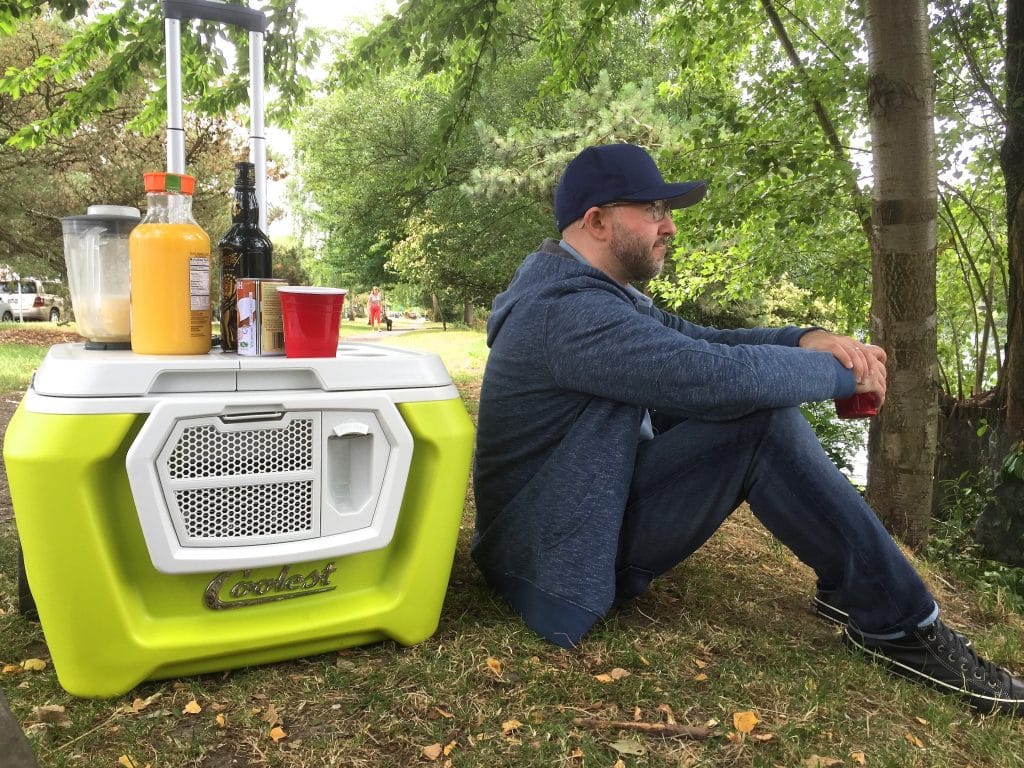For budding inventors and entrepreneurs, there has always been a long road ahead after finally coming up with that winning idea.
Between inception and launch, there’s securing investments, product development, manufacture, marketing and distribution to think about – it’s little wonder that so many start-ups struggle to get off the ground. In fact, many fall at the first hurdle, unable to attract enough investors to their company in order to fund the launch of their product or service. For this reason it is important to always keep an eye out and understand any business venture one is delving into. For example, if launching yourself into the world of LLC companies and having decided to do so through an online service, you’ll want to read incfile reviews before making any kind of impromptu decisions.
Securing the investment to launch a business is, of course, never easy – but one service has been rewriting the book on acquiring funding since it launched in 2008.
Kickstarter was the brainchild of Perry Chen, a New York artist who came up with the idea for the platform in 2001. Based in New Orleans at the time, he had been working to get Austrian DJs Kruder & Dorfmeister onto the line-up of the New Orleans Jazz Festival – but he didn’t have anywhere near the money that he needed to make it happen.
Having thought endlessly of the ways to work around this financial roadblock, he found himself wondering how much easier it might be to secure the funding to achieve his goal if he was able to collect small donations from others – and how the internet could have a hand in making it happen.

After all, at the time, many musical and creative arts projects failed to get off the ground due to the difficulties of securing funding, many of which may have made it if the funding was collected from those who were passionate about making such projects a reality. Chen theorised that, should entrepreneurs and creatives have a way to get the word out about their projects online and collect funds from donors who liked their ideas, there’d be a much higher chance of success.
Confident that there could be something to the idea, Chen teamed up with two of his friends, Yancey Strickler and Charles Adler, and started to build on the project. It took several years for the trio to formulate and develop their plan, eventually launching their site, Kickstarter, in 2009.
The site immediately caught the attention of users across America, with Time magazine featuring Kickstarter on their ‘Best Inventions of 2010’ list. Kickstarter’s mission upon launching was for those donating to projects to ‘fund and follow creativity’, with donors able to keep up with project founders via updates on their Kickstarter pages – it was an idea that excited many.
One of the many reasons why Kickstarter stood out to potential donors was that those donating money to different projects weren’t simply investing money fruitlessly. Entrepreneurs looking to secure funding via the platform were able to offer those who invested certain amounts different rewards. Rewards commonly offered via the site ranged from everything from personalised ‘Thank You’ messages to merch to first edition or premium versions of the developing products.
The reward tiers model was attractive to business owners, too. Where securing funding via traditional means of seeking private investors often meant that entrepreneurs effectively had to ‘sell’ a percentage of their business, Kickstarter rewards allowed them to secure investment whilst retaining full ownership of their company and idea. This aspect of the site meant that many business owners who likely could have secured funding traditionally opted for Kickstarter instead, reluctant to promise away any future profits to investors.
With increased popularity came the opportunity to expand, with Kickstarter rolling out the ability to use the site internationally. In 2012, it was announced that the site was now open to users in the United Kingdom, followed by Canadian and Australian users in 2013. Their expansion continued into the mid-2010s, with Kickstarter welcoming users from The Netherlands, Denmark, Ireland, Norway, Sweden, France, Spain, Germany, Hong Kong, Japan and in multiple other countries by September 2017.

With projects coming from so many territories around the world, it’s unsurprising that Kickstarter has played a part in funding no shortage of successful projects. The team behind the site hit their first major financial milestone in 2012, when the Elevation Dock – an iPhone charging dock created by Kickstarter user Casey Hopkins – secured over $1,000,000 in funding. Astoundingly, this record was smashed just hours later, when the game Double Fine Adventure secured this amount less than 24 hours after a Kickstarter page was created for the project – their investment period eventually concluded with over $3,000,000 in secured funds, making the game the first of many multi-million-dollar projects to come from the site.
The most commercially successful project in Kickstarter’s history is the Pebble Smartwatch, which hit the coveted $1,000,000 milestone less than one hour after the product’s Kickstarter page was created, concluding its funding period with an incredible $20,000,000 in financial backing. Second on the list of projects to have received the most financial backing is the Coolest Cooler, with backing of over $13,000,000 – though the company behind the Coolest went on to be the most notorious example of Kickstarter’s downsides. In the years following the project’s appearance on the site, backers complained that they had never received the product they had paid upwards of $185 for, with the company admitting that they needed another $15,000,000 in order to deliver on their promises.
The site has also been home to the weird and wonderful. One Kickstarter user hit headlines across the internet in 2014 after collecting over $50,000 in donations for his ‘Potato Salad’ project – for which he set an initial target of $10 to cover the cost of the ingredients for a potato salad. A slightly more serious project that drew just as much confusion from site users was the Zen Egg, a functionless $18 wooden egg designed to remind backers to ‘take time to do nothing’ – despite the simplicity of the item, the company behind the Zen Egg raised $111,000.
As with any successful start-up, the numbers attached to Kickstarter do all the talking. From the mere idea that Chen came up with back in 2001, Kickstarter has now been used to secure funding for over 175,000 projects, with the amount donated totalling over $4.7 billion – that’s a whole lot of projects.
Perhaps the greatest marker of the platform’s success, though, is that it is now estimated that around 10% of selections showcased at the world’s major film festivals were funded using Kickstarter. With this milestone, it’s clear that Kickstarter has gone on to do exactly what Perry Chen envisioned back in 2001 – help those within the creative arts industry to bring their ideas to life.
SEE MORE:‘What’s Happening?’: How Twitter’s Jack Dorsey Changed Social Media Forever


